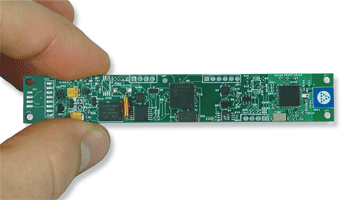Wireless sensor networks jump into the market
Users now have many optionsfrom building their own systems with off-the-shelf components to simple plug-and-play
BY RICHARD COMERFORD
Electronic Products Editor
Sensors & Transducers
In theory, wirreless sensor networking has always made sense: it lets you put a sensor anywhere without the hassle and cost of running wires all over. But as with many good ideas, the devil has been in the detailsfiguring out how to make things work reliably for long periods.
With years of hard work, engineers cast out the devils to produce practical components and systems that now work reliably in the field. And while standards to promote consistency among multiple vendors now exist, there are also proprietary wireless sensor networks (WSNs) that fit apps in sky scrappers, factories, farms, and everything in between.
ICs and components
A major impetus to the introduction of new components for implementing WSNs was the finalization, in December 2006, of the ZigBee Alliance’s specification for a low-cost, low-power, two-way wireless communications protocol. This enabled vendors to integrate all the WSN components needed in a single chip.
Freescale Semiconductor (Tempe, AZ) launched the MC1322X ZigBee Platform in a Package, reducing the number of ICs needed to implement a ZigBee connection from more than a dozen to one. The chip’s low power consumption supports 20-year battery life. A proprietary TurboLink mode can boost the data rate to 2 Mbits/s from the 250-kbit/s ZigBee max. Since the chip will switch automatically between the two rates, designers can use the proprietary protocol with ZigBee implementations.
The CC2431 System-on-Chip from Texas Instruments (Dallas, TX) is a ZigBee transceiver that can actually tell users where it is physically located. The chip’s RSSI-based location engine calculates the IC’s position based on the strength of the signal received from reference nodes with know locations, particularly useful in mobile sensor.
The M2110 OEM Edition module from Crossbow Technology (San Jose, CA) is the size of a postage stamp, yet it provides all the circuitry a wireless sensor needs: a ZigBee-capable 2.4-GHz IEEE 802.15.4 transceiver, a processor with 512 kbytes of measurement-data flash memory, 128 kbytes of program flash memory, and analog and digital sensor interface. It has up to three times the range of comparable devices.

MicroStrain’s ESG-Link wireless strain sensor is the first with built-in energy harvesting.
The question of how to power remote wireless sensors has been commercially addressed by ESG-Link, an energy-harvesting, wireless strain transmitter from MicroStrain (Williston, VT). Recently used to measure helicopter blade strain, the sensor has a piezoelectric film that harvests energy from the strain force so it can power the node indefinitely.
Network implementations
While some companies have waited for industry standards to develop to build a road into wireless networking others have charted their own paths. Said to be the first wireless platform built for industrial use from the ground up, the SureCross wireless network from Banner Engineering (Minneapolis, MN) features proprietary RF design, power management with battery and solar options, and low-power sensors. A complete system solution, it can handle real-world applications from municipal water monitoring to physical-plant energy management.
The MeshScape wireless sensor networking software platform from Millennial Net (Burlington, MA) is a highly scalable efficient, and responsive protocol and networking system supported by nodes from the company and third parties. The company’s recently introduced 5424 Wi-Stat wireless thermostat addresses a practical problem: how to place a thermostat in an area that hadn’t initially been considered for thermal monitoring. It makes installing new HVAC system a lot easier too.
An out-of-the-box solution, Primer Pack/IP from Arch Rock (San Francisco, CA) is the first sensor network that runs native IP end-to-end to let users create pilot wireless sensor networks tie into other IP nets. ■
Advertisement
Learn more about Electronic Products Magazine





